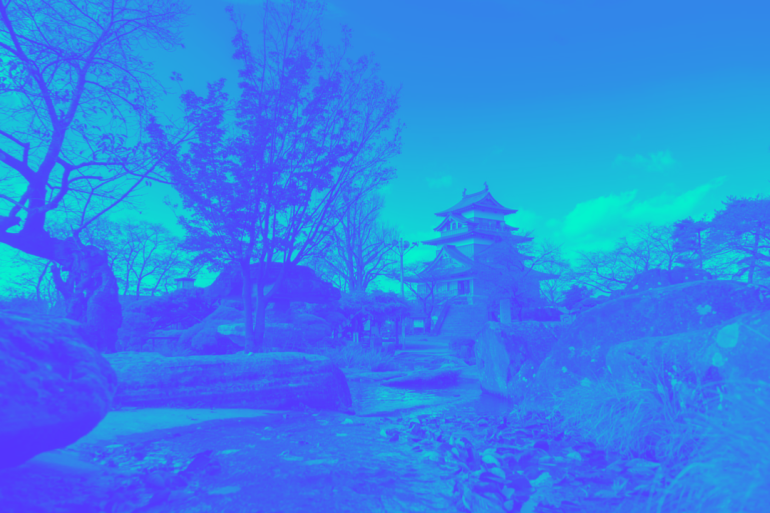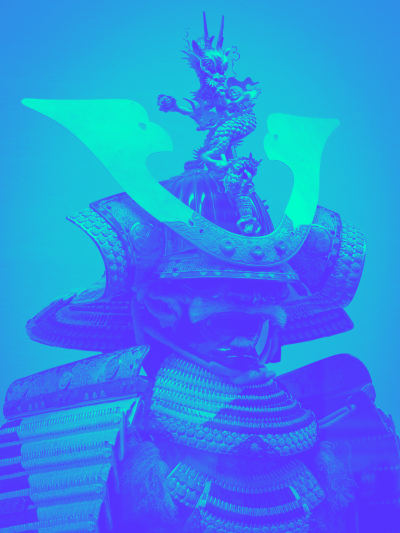Takuan Sōhō was a Zen monk, calligrapher, painter, poet, gardener, tea master, and, perhaps, inventor of the pickle that even today retains his name. His writings were prodigious (the collected works fill six volumes), and are a source of guidance and inspiration to the Japanese people today, as they have been for three and a half centuries. Adviser and confidant to high and low, he seems to have moved freely through almost every stratum of society, instructing both shogun and emperor and, as legend has it, being friend and teacher to the swordsman/artist Miyamoto Musashi. He seems to have remained unaffected by his fame and popularity, and at the approach of death he instructed his disciples, “Bury my body in the mountain behind the temple, cover it with dirt, and go home. Read no sutras, hold no ceremony. Receive no gifts from either monk or laity. Let the monks wear their robes, eat their meals and carry on as on normal days.” At his final moment, he wrote the Chinese character for yume (“dream”), put down the brush, and died.
Takuan was born in 1573 in the village of Izushi in the province of Tajima, an area of deep snows and mountain mists. Izushi is a village ancient enough to be mentioned in both of the early histories of Japan, the Kojiki (712 CE) and the Nihon-gi (720 CE), and the countryside around it is sprinkled with relics of earlier ages, as well as ancient burial mounds and pottery shards of extreme antiquity. Although born into a samurai family of the Miura clan at the culmination of 150 years of civil strife, Takuan entered a monastery at the age of ten to study the Jōdo sect of Buddhism, moving on to practice the Rinzai sect of Zen at the age of fourteen and becoming the abbot of the Daitokuji, a major Zen temple in Kyoto, at the unprecedented age of thirty-five.
In 1629, Takuan became involved in what was referred to as the “Purple Robe Affair,” in which he opposed the shogunate’s decision to cancel the emperor’s power to make appointments to high ecclesiastical ranks and offices. For his opposition, he was banished to what is now Yamagata Prefecture, and it was in this far northern hinterland where the first and the last of the three essays in this volume were written. He was included in the general amnesty upon the shogun’s death, and returned to Kyoto in 1632. During the following years he befriended and taught Zen to the abdicated but still influential emperor, Go-Mizunoo. He also so impressed the new shogun, Tokugawa Iemitsu, who constantly sought his friendship, that Iemitsu had the Tōkaiji built in 1638 for Takuan. And, while friendly to both shogun and emperor, he adamantly steered clear of the political quarrels that so often embroiled the shogunate and the chrysanthemum throne.

To the end, Takuan is said to have followed his own independent, eccentric, and sometimes bitter way. His strength and angularity are apparent in his calligraphy and painting as well as in the following essays, and it is interesting that we can, perhaps, have a taste of the man’s character by simply sampling a dish of takuanzuke, a pickle made from the giant Japanese radish.
His life may be summed up by his own admonition, “If you follow the present-day world, you will turn your back on the Way; if you would not turn your back on the Way, do not follow the world.”
It is said that Takuan sought to infuse the spirit of Zen into every aspect of life that caught his interest, such things as calligraphy, poetry, gardening, and the arts in general. This he also did with the art of the sword. Living during the last days of the violent feudal strife which culminated, essentially, with the Battle of Sekigahara in 1600, Takuan was acquainted not only with the peace and sublimity of the artist and tea master, but also with the confrontation—victory and defeat—of the warrior and general. Among the latter were such disparate figures as Ishida Mitsunari, a powerful general who supported Toyotomi Hideyoshi; Kuroda Nagamasa, a Christian daimyo who engineered Mitsunari’s downfall; and, especially, his friend Yagyū Munenori, head of the Yagyū Shinkage school of swordsmanship and teacher to two generations of shoguns. To these men and these times, Takuan addressed himself no less than to others.
Of the three essays included in this translation, two were letters: Fudōhishinmyōroku, “The Mysterious Record of Immovable Wisdom,” written to Yagyū Munenori; and Taiaki, “Annals of the Sword Taia,” written perhaps to Munenori or possibly to Ono Tadaaki, head of the Ittō school of swordsmanship and also an official instructor to the shogun’s family and close retainers. The circumstances of how they came to be written are unclear, although the frank advice and rather Confucian admonishment to Munenori at the end of Fudōhishinmyōroku adds another interesting if somewhat puzzling dimension to this work.
As a whole, all three are addressed to the samurai class, and all three seek to unify the spirit of Zen with the spirit of the sword. The advice given is a blend of the practical, technical, and philosophical aspects of confrontation. Individually and broadly speaking, one could say that Fudōhishinmyōroku deals not only with technique, but with how the self is related to the Self during confrontation and how an individual may become a unified whole. Taiaki, on the other hand, deals more with the psychological aspects of the relationship between the self and the other. Between these, Reirōshū, “The Clear Sound of Jewels,” deals with the fundamental nature of the human being, with how a swordsman, daimyo—or any person, for that matter—can know the difference between what is right and what is mere selfishness, and can understand the basic question of knowing when and how to die.
All three essays turn the individual to knowledge of himself, and hence to the art of life.
Swordsmanship as an expression of technique alone and meditative Zen had long existed in Japan, Zen having become firmly established around the end of the twelfth century. With Takuan they achieved a true coalescence, and his writings and opinions about the sword have been extraordinarily influential on the direction that the art of Japanese swordsmanship has taken from that day to the present, for it is an art still fervently practiced, and it reflects a significant spectrum of the Japanese outlook on life. Firmly establishing the unity of Zen and the sword, Takuan’s thoughts have influenced the writings of the great masters of the time and produced a spinoff of documents that continue to be read and applied, such as the Heihō Kadensho of Yagyū Munenori and the Gorin no Sho of Miyamoto Musashi. The styles of these men differed, but their conclusions weave together a lofty level of insight and understanding, whether it be expressed as the “freedom and spontaneity” of Musashi, the “ordinary mind that knows no rules” of Munenori, or the “unfettered mind” of Takuan.
For Takuan, the culmination was not one of death and destruction, but rather of enlightenment and salvation. Confrontation, in the “right” mind, would not only give life, but give it more abundantly.
